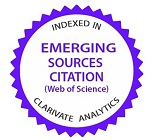Abstract
The immune system of semi- and super-centenarians (i.e., the oldest centenarians) is believed to have peculiar characteristics that enable them to reach extreme longevity in a relatively healthy state. Therefore, in previous papers, we investigated, through flow cytometry, variations in the percentages of the main subsets of Tαβ and Tγδ cells in a Sicilian cohort of 28 women and 26 men (age range 19-110 years), including 11 long-living individuals (>90 years old) and 8 oldest centenarians. These investigations suggested that some observed immunophenotypic changes may contribute to the extreme longevity of the oldest centenarians. In the present study, to further characterize the immunophenotype of the oldest centenarians, we examined the percentages of Natural Killer (NK) cells identified as CD3-CD56+CD16+ in the previously described Sicilian cohort. We found a highly significant increase in NK cell percentages with age. When stratified by gender, this significant increase with age was maintained in both sexes, with higher significance observed in males. Our findings on NK cells, together with the previously obtained results, discussed in the context of the literature, suggest that these changes are not unfavourable for centenarians, including the oldest ones, supporting the hypothesis that immune aging should be considered as a differential adaptation rather than a general immune alteration. These adapted immune mechanisms allow the oldest centenarians to successfully adapt to a history of insults and achieve remarkable longevity.
Recommended Citation
Ligotti, Mattia Emanuela; Accardi, Giulia; Aiello, Anna; Calabrò, Anna; Caruso, Calogero; Corsale, Anna Maria; Dieli, Francesco; Simone, Marta Di; Meraviglia, Serena; and Candore, Giuseppina
(2023)
"Sicilian semi- and supercentenarians: age-related NK cell immunophenotype and longevity trait definition,"
Translational Medicine @ UniSa: Vol. 25
:
Iss.
1
, Article 2.
Available at:
https://doi.org/10.37825/2239-9747.1041
Creative Commons License

This work is licensed under a Creative Commons Attribution-Noncommercial-No Derivative Works 4.0 License.
Included in
Health Communication Commons, Life Sciences Commons, Medicine and Health Sciences Commons




